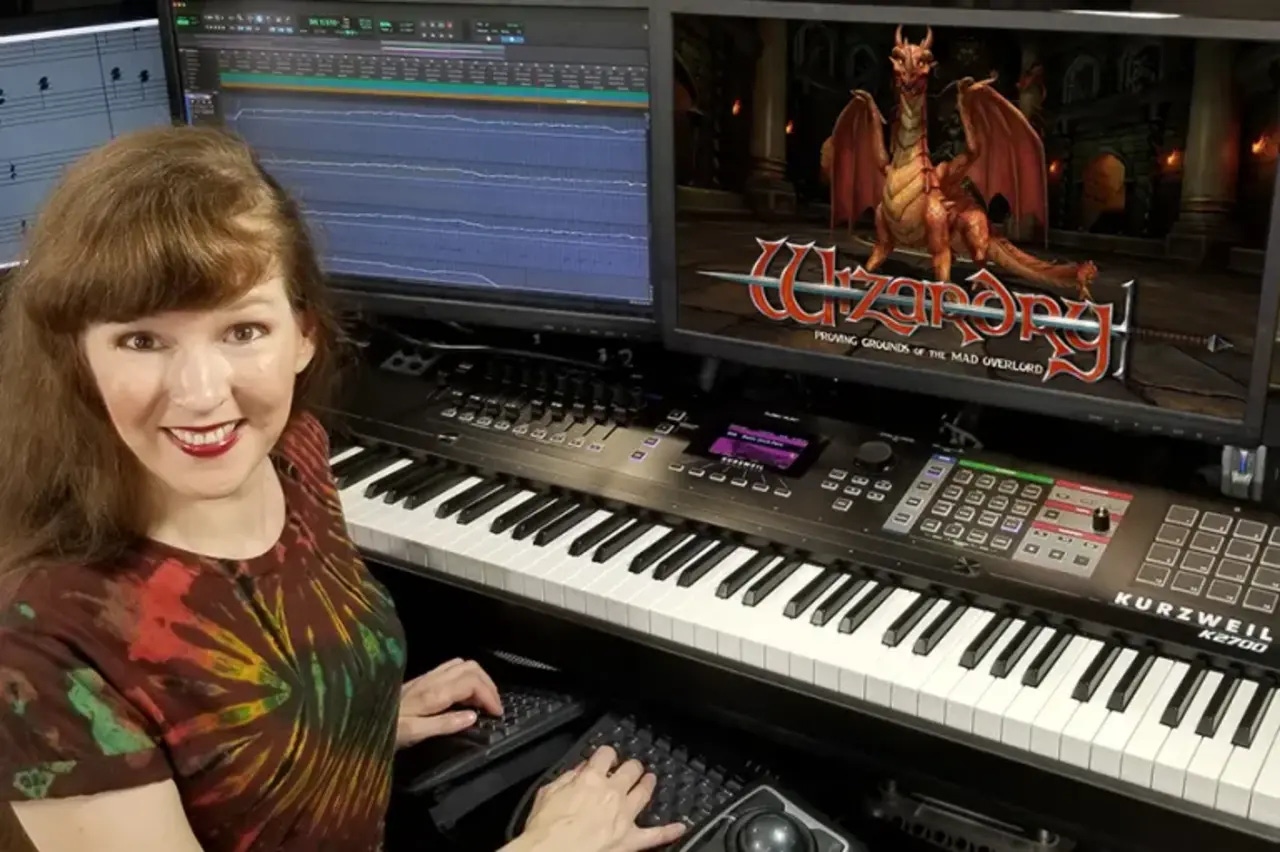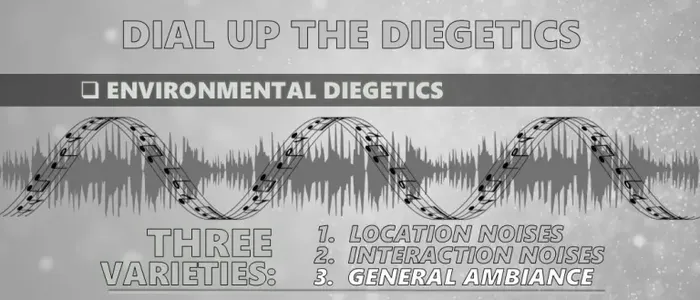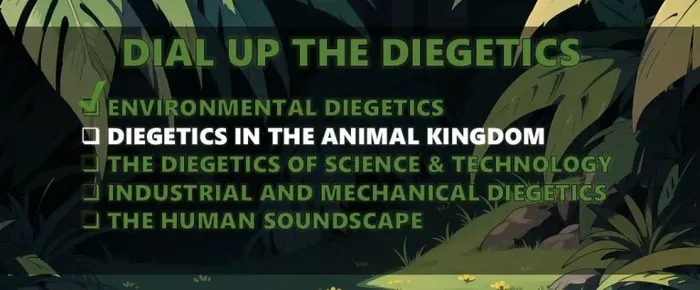Trending
Opinion: How will Project 2025 impact game developers?
The Heritage Foundation's manifesto for the possible next administration could do great harm to many, including large portions of the game development community.

Featured Blog | This community-written post highlights the best of what the game industry has to offer. Read more like it on the Game Developer Blogs or learn how to Submit Your Own Blog Post
This article explores how environmental sound design, particularly from the natural environment, can be integrated into musical compositions to enhance diegetic immersion. Article based on the 2024 GDC lecture given by video game composer Winifred Phillips (latest: Wizardry: Proving Grounds of the Mad Overlord)

By Winifred Phillips | Contact | Follow
Welcome back! I’m video game composer Winifred Phillips – my latest game project is the award-winning music for the smash-hit 3D remake of Wizardry: Proving Grounds of the Mad Overlord! (Listen and download the award-winning soundtrack, and vote for the Wizardry soundtrack in the public voting of the World Soundtrack Awards.)
This is part two of my article series that presents the content of my lecture from the Game Developers Conference 2024. This year, my presentation, “Dial Up the Diegetics: Musical Sound Effects,” explored how composers can employ sound design assets and techniques in their game music. Since not all of us can attend GDC, I make sure to post the content of my GDC lectures every year in a series of articles that present the full discussions, along with many of the videos and illustrations that were a part of my lecture. Last month I posted part one of this article series, in which we considered a list of categories wherein sound design assets may be sorted:
.webp?width=700&auto=webp&quality=80&disable=upscale)
We began with a discussion of environmental diegetics, first exploring how short environmental sound design assets supports diegesis, and the ways in which we can make these sound design assets work in our musical compositions. So now, let’s explore that idea further.

There are many musical uses for the brief sounds generated by a particular locality. As an example, last month we discussed the uses of water dripping and popping sounds, accentuating the music of an underwater gameplay environment in the popular video game Sackboy: A Big Adventure. This was an overt use of location noises to make music more evocative. So now let’s consider the different sorts of sounds that would be made by somebody while they’re interacting with an area.
Developed by Ubisoft Sofia, Assassin’s Creed Liberation takes players from the Louisiana Bayou to Mexico in the 18th Century, following the adventures of Aveline de Grandpré as she works to uncover a shadowy conspiracy by the Knights Templar.

At one point, she travels to the frontier wilderness surrounding New York, expertly braving the harsh winter conditions along the way. Composing the music for this game, I wanted my compositions to contribute to the immersion of the game world – and that included the freezing cold of this particular mission.
So, I thought, what sound effects are intrinsically wintery? Wind isn’t limited to winter, and snowfall is pretty silent. So that leaves the sounds people make in the snow. I wanted something that would work inside a stealthy rhythmic musical texture during exploration, so I thought about skiing. What does it sound like when a ski slides across the snow?
That seemed like a start, but it wasn’t particularly useful from a rhythmic perspective. So I simulated this sound effect, using brushes instead:
Much better – still conveys the sliding movement across a powdery surface, but now it gives me a clear impact, so I used it as the basis of my rhythm during winter exploration. Here’s the final result:
We’ve thought about short sound effects rising out of the environment – but what about general ambience?

Locations typically have lengthy ambiences worked into the sound design, but sometimes we’ll want the ambient effects to rise and fall with the contours of our compositions. So let’s take a look at another winter-themed situation to see how that works.
In the Dragon Front Rising VR game from High Voltage Software, you’re a champion empowered by the Gods to save the world of Terrene Gall during the second Great War. It’s a strategy card battler, and you can choose one of six factions, including the icy Eclipse warriors.

The music for this faction needed to feel especially frigid, so I opted to use both interaction noises and general ambience. Gusts of wind surge at just the right musical moments, punctuated by crisp snowboarding flybys that conveyed the kind of chilly aggression I wanted for these snowy battles:
So let’s see what that was like ingame:
We’ve now explored what environmental sound design can do for our music, so let’s move on to the second item on our list: Diegetics from the Animal Kingdom.

The sounds of wildlife can be immensely useful to us as game composers – particularly if they serve to add character and personality to our music. I’ve had lots of opportunities to add creature vocalizations into my musical scores, and there are tons of ways to make that work. So let’s take a look at a few examples, starting with the simplest way to use animal sounds to make a point.
In the Speed Racer video game developed by Sidhe Interactive, you’re an elite driver trying to reach the top of the winner’s podium in the World Racing League Cup, which includes numerous events at exotic locales. One of these is Onuris – an awesome Egyptian-inspired raceway with portions of the track suspended above the ocean. As the composer for Speed Racer, I wanted the music for this track to vividly evoke the seashore. So, what sounds are the most… beachy?
Nothing like seagulls to make us think about the ocean. Using these bird calls at optimum points during the race music was a great way to impress players with the idea that they’re zipping over the waves. Let’s check out how that worked:
As you could see, this was an overt and very specific sonic reference that included some famous birds — truly the best way to evoke the diegesis of the environment and weave the music more directly into the in-game action.
In part three of this article series, we’ll be diving deeper into the utility of animal noises within our musical compositions. Until then, thanks very much for reading!
.webp?width=700&auto=webp&quality=80&disable=upscale)

Winifred Phillips is a BAFTA-nominated video game composer whose latest project is the original musical score for the video game Wizardry: Proving Grounds of the Mad Overlord (official soundtrack available now on Spotify and as a free album download on Bandcamp). Music from her latest Celtic fantasy album release, Ancient Heroes, won two Gold medals from the Global Music Awards, was nominated for a Hollywood Independent Music Award, and is now available from the BMG record label 1 Revolution. Phillips is known for composing music for games in many of the most famous and popular franchises in gaming: Assassin’s Creed, God of War, Total War, The Sims, LittleBigPlanet, Lineage, Jurassic World, and Wizardry. Phillips’ awards include the D.I.C.E. Award, six Game Audio Network Guild Awards (including Music of the Year), and four Hollywood Music in Media Awards. She is the author of the award-winning bestseller A COMPOSER’S GUIDE TO GAME MUSIC, published by the MIT Press. An interview with her has been published as a part of the Routledge text, Women’s Music for the Screen: Diverse Narratives in Sound, which collects the viewpoints of the most esteemed female composers in film, television, and games. Follow her on Twitter, Facebook, and Instagram.
You May Also Like